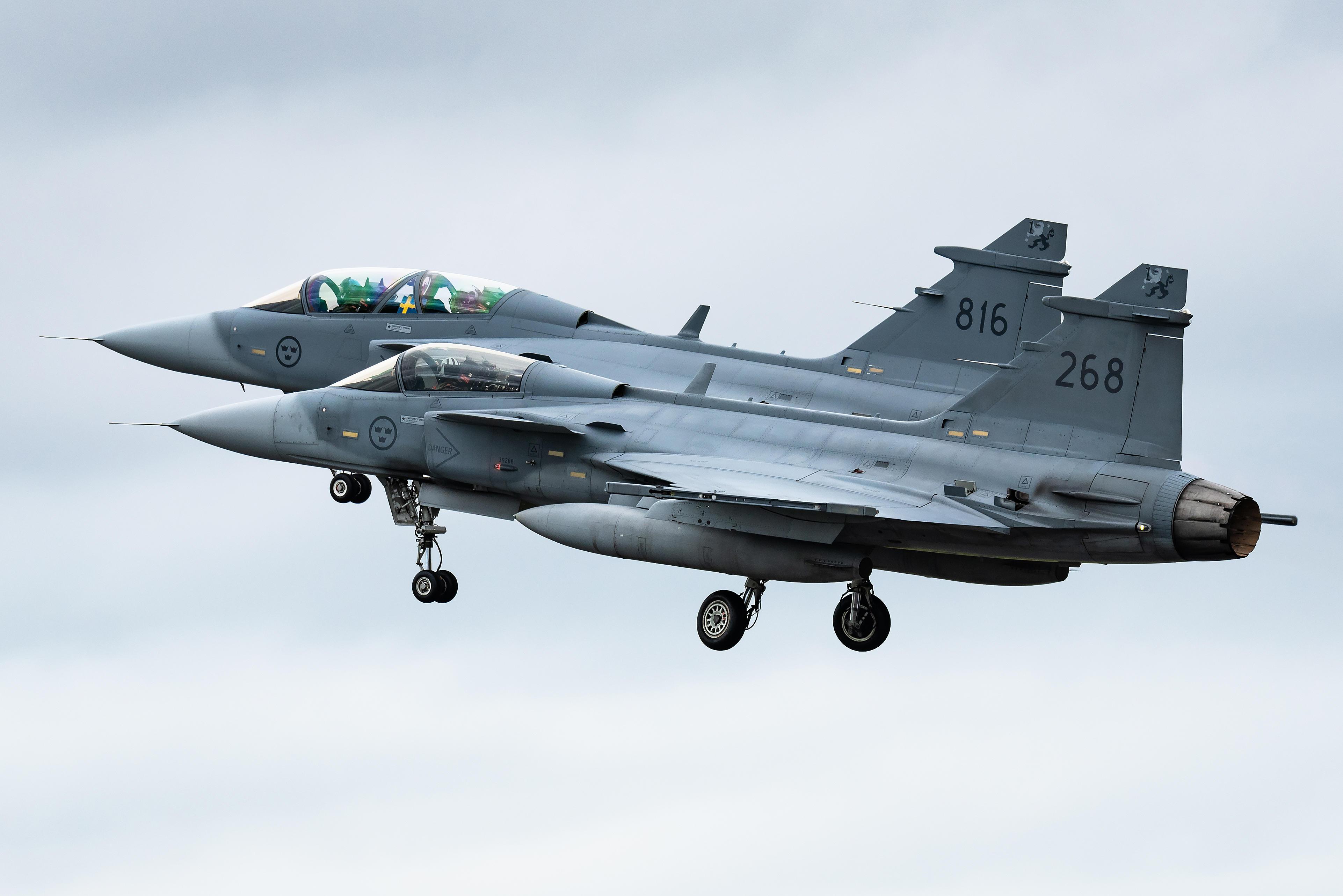
LONDON—A strategy update by the Swedish Armed Forces scheduled for November is likely to call for an additional fighter squadron and the re-establishment of fighter pilot training in Sweden, the head of the Swedish Air Force said July 17 in London.
Maj. Gen. Carl Johan Edstrom, head of the Swedish Air Force, says he expects to need the previously announced acquisition program of 60 Saab JAS 39E Gripens and up to 60 more JAS 39C/Ds to equip all seven squadrons by 2030.
The likely new plan means the Air Force would preserve a majority of the older JAS 39C/Ds in service for at least another decade.
The older fighters will require new weapons, sensors and avionics to remain relevant, Edstrom said.
The proposals to increase the size of Sweden’s Air Force come amidst a surge of defense spending across Europe and especially in the Nordic country, which has been approved to join NATO later this year.
Since Russia invaded Ukraine in February, Sweden has committed to spend 2% of GDP on defense.
The armed forces are now revisiting a national defense strategy last updated in 2018, when the country spent about 1.2% of GDP on defense.
The reviews also will change how the Swedish Air Force plans to train pilots in the long-term.
For the next 10-12 years, Edstrom said, Sweden plans to send student pilots overseas for lead-in fighter training (LIFT) with advanced jet trainers. That marks a change from the 2018 plan, which called for providing LIFT with JAS 39Ds borrowed from operational squadrons.
The new security situation in Europe does not allow the Swedish Air Force to degrade the capacity of operational JAS 39 squadrons, Edstrom said.
In 10-15 years, the Swedish Air Force plans to acquire a new LIFT training fleet. The armed forces has released a request for information to industry to begin an analysis of options for a future production order, Edstrom said.

